Emergency alert broadcast automation is an effective way for broadcasters to quickly and efficiently deliver emergency information to their audiences. This technology allows broadcasters to quickly set up, customize and manage emergency alerts, as well as store past alert messages for future use. Automated emergency alert systems can be programmed to detect and respond to certain types of incidents, such as severe weather, and to provide detailed information about the event, such as location and severity. Automated alert systems can also allow broadcasters to customize their emergency alerts, with options to include images, audio and video. Additionally, these systems can be integrated with other communication systems, such as text messaging and email, in order to reach a wider audience. Overall, emergency alert broadcast automation is an efficient and effective way for broadcasters to provide timely and accurate information to their audiences. This technology helps keep people safe and informed, and allows broadcasters to quickly and effectively respond to emergency situations.
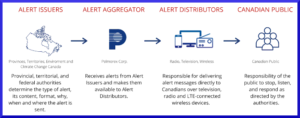
Canadian CAP-CP Common Alerting Protocol
Key features of emergency alert automation
- Easy upgrades made simple through software updates – no need to spend thousands of additional dollars buying new hardware every time alerting regulations or protocols change
- Guaranteed compliance with the Canadian Radio-television and Telecommunications Commission’s (CRTC) mandated requirement for licensed broadcasters to accept and broadcast Pelmorex™ NAAD (National Alert Aggregation and Dissemination) internet feeds adhering to the Common Alerting Protocol – Canadian Profile (CAP-CP)
- Easily adaptable to emergency alert automation requirements of jurisdictions using CAP (ITU x.1303) including the United States.
- Multi-lingual support, including indigenous languages
- Mapping function displays Common Alerting Protocol EAS emergency alert system for cable TV or digital signage visual alerts
- Available as a turn key supported device or DIY open source software
- Integrates with RSS feeds to provide an additional layer of information Integrates with existing alerting systems, such as radio and television broadcast systems, pagers, cellular networks, and landline telephones
- Support for multiple alert types including text, audio, visual, and tactile
- Integrates with other public safety systems such as fire, police, and ambulance services
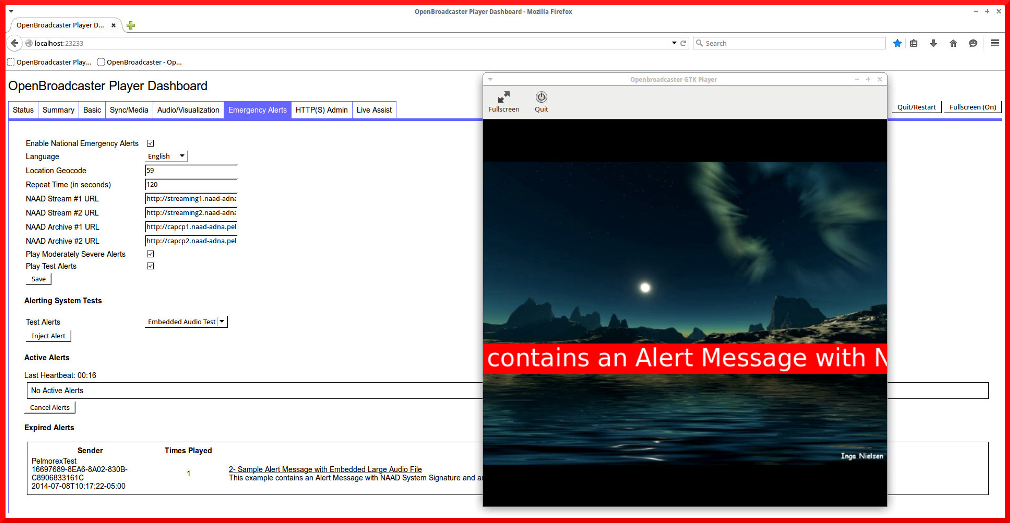
OpenBroadcaster obplayer CAP alert overlay
Emergency Alerting Systems
CAP Audio Alerts
- Onboard analog stereo 1/8” mini output. Audio present only when a valid alert is being broadcast.
- GPIO trigger reverses DTR voltage with RS232. Can be used to switch an external relay when an alert message is played.
- BARIX Exstreamer at radio transmitter uses a priority port for incoming stream of emergency message
- Silence Detection using external third party hardware senses signal coming out of the Alert Player and mechanically switches a relay on your board.
- Integrated AXIA Digital AoIP (Audio over IP) Console senses an on demand Livewire stream of alert in conjunction with the Qor’s GPIO, switching channels in the broadcast chain console while EAS is in progress and switches back upon completion.
CAP Visual Alerts
Applicable for over the air TV, Cable TV and digital signage applications. Normal visual alerts will be displayed. When there is a valid EAS alert, a red scrolling overlay will display the text of this message with accompanying audio.
- Onboard local video with Display Port displays an overlay when a valid CAP message is being broadcast.
- GPIO trigger using RS232 DTR when alert message is played, switching CATV channel on digital cable head end.
- Configuring streaming media server to detect new mount point of on demand stream
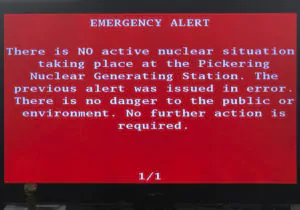
Canada Nuclear Plant Error Message
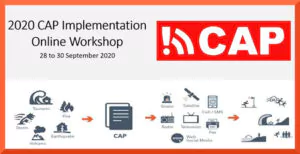
CAP Common Alerting Protocol Workshop 2020
CAP Common Alerting Protocol
Hire an expert with experience to custom code solutions for your project, big or small. We look forward to providing your government organization and country with the best CAP (Common Alerting Protocol) emergency alert automation solution available. Please Sponsor and Contribute to open source projects that utilize CAP.
Sign up for our Newsletter and Contact us for more info. We are here to help.
![]()
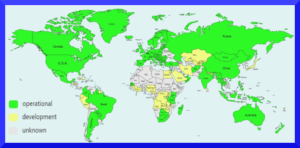
CAP Global Development Status

